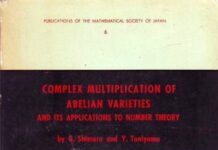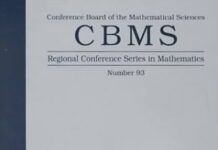
Ebook Info
- Published: 1971
- Number of pages: 288 pages
- Format: PDF
- File Size: 1.95 MB
- Authors: Goro Shimura
Description
The theory of automorphic forms is playing increasingly important roles in several branches of mathematics, even in physics, and is almost ubiquitous in number theory. This book introduces the reader to the subject and in particular to elliptic modular forms with emphasis on their number-theoretical aspects. After two chapters geared toward elementary levels, there follows a detailed treatment of the theory of Hecke operators, which associate zeta functions to modular forms. At a more advanced level, complex multiplication of elliptic curves and abelian varieties is discussed. The main question is the construction of abelian extensions of certain algebraic number fields, which is traditionally called “Hilbert’s twelfth problem.” Another advanced topic is the determination of the zeta function of an algebraic curve uniformized by modular functions, which supplies an indispensable background for the recent proof of Fermat’s last theorem by Wiles.
User’s Reviews
Editorial Reviews: From the Back Cover The theory of automorphic forms is playing increasingly important roles in several branches of mathematics, even in physics, and is almost ubiquitous in number theory. This book introduces the reader to the subject and in particular to elliptic modular forms with emphasis on their number-theoretical aspects. After two chapters geared toward elementary levels, there follows a detailed treatment of the theory of Hecke operators, which associate zeta functions to modular forms. At a more advanced level, complex multiplication of elliptic curves and abelian varieties is discussed. The main question is the construction of abelian extensions of certain algebraic number fields, which is traditionally called “Hilbert’s twelfth problem”. Another advanced topic is the determination of the zeta function of an algebraic curve uniformized by modular functions, which supplies an indispensable background for the recent proof of Fermat’s last theorem by Wiles. About the Author Goro Shimura is Professor of Mathematics at Princeton University.
Reviews from Amazon users which were colected at the time this book was published on the website:
⭐Classic.
⭐This is a classical masterpiece in the area. Although much of the matherial is now available in other books, I am sure that this book must be on the bookshelf of anyone whose research is seriously connected with modular forms. As a warning, the book is no easy reading, and despite its title, should not be considered as an introductory text.
⭐received! thanks!
⭐1章、2章で保型形式を解説し、3章でHecke環の話になる。群論的なHecke環の定義は志村五郎本人が考えたもの。重要な関数等式を証明したあと、4~6章で、楕円保型形式を解説している。ここでは、虚数乗法や虚2次体に関するクロネッカーの青春の夢、そしてモジュラー関数体のガロア群を類体論に類似的に与えていて、実り多い内容となっている。7章ではアーベル多様体のゼータ関数が解説してあるが、ここに関してはアーベル多様体定義自体が現代的でなく、無理に読む必要はないかも。8章では有名なアイヒラー志村のコホモロジーの話。群のコホモロジーから欲しい結果を導いているが、こちらもDiamond Shurmanあたりのほうがいいかも。
⭐
Keywords
Free Download Introduction to the Arithmetic Theory of Automorphic Functions (Publications of the Mathematical Society of Japan, Vol. 11) 1st Edition in PDF format
Introduction to the Arithmetic Theory of Automorphic Functions (Publications of the Mathematical Society of Japan, Vol. 11) 1st Edition PDF Free Download
Download Introduction to the Arithmetic Theory of Automorphic Functions (Publications of the Mathematical Society of Japan, Vol. 11) 1st Edition 1971 PDF Free
Introduction to the Arithmetic Theory of Automorphic Functions (Publications of the Mathematical Society of Japan, Vol. 11) 1st Edition 1971 PDF Free Download
Download Introduction to the Arithmetic Theory of Automorphic Functions (Publications of the Mathematical Society of Japan, Vol. 11) 1st Edition PDF
Free Download Ebook Introduction to the Arithmetic Theory of Automorphic Functions (Publications of the Mathematical Society of Japan, Vol. 11) 1st Edition





